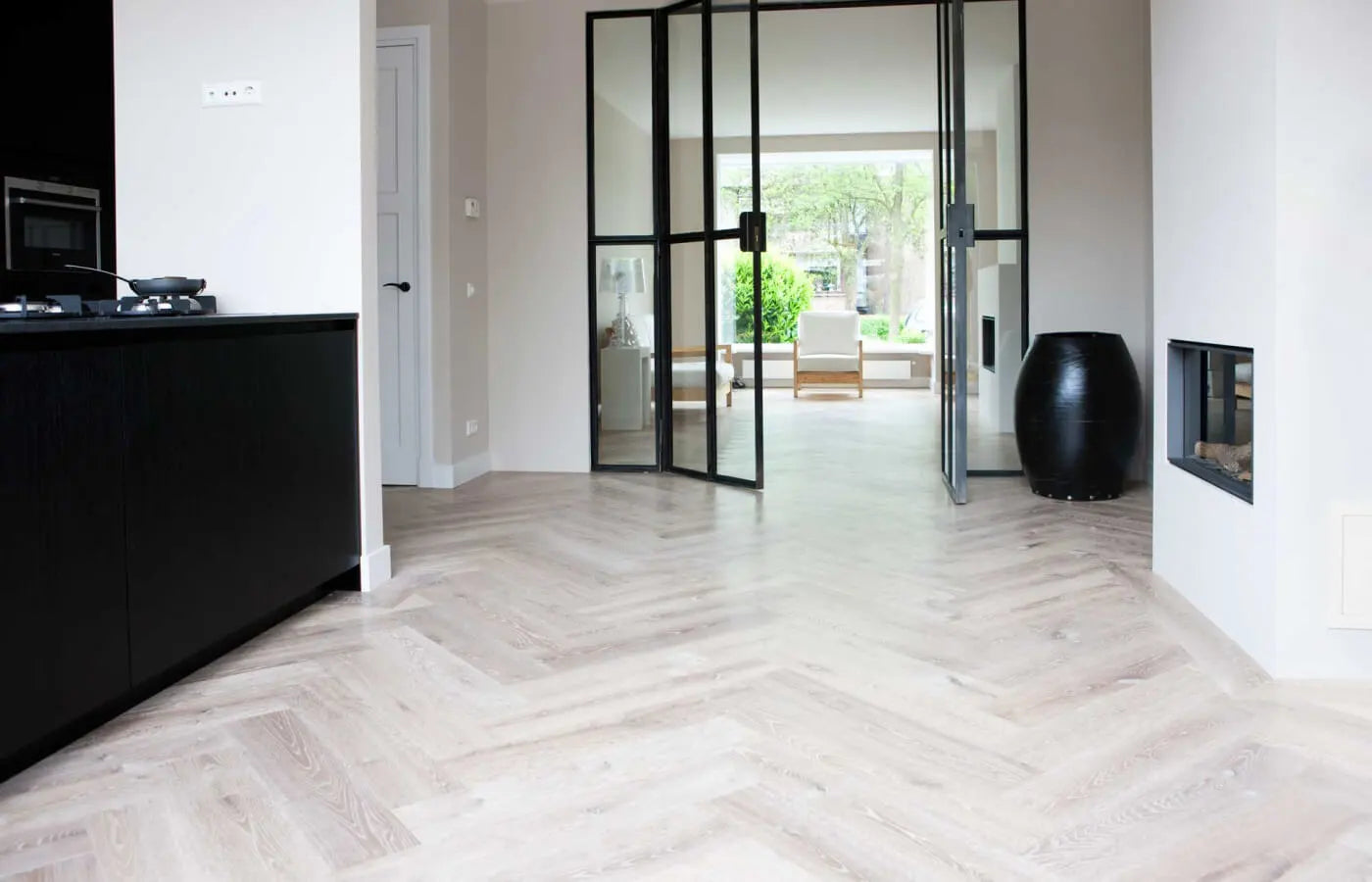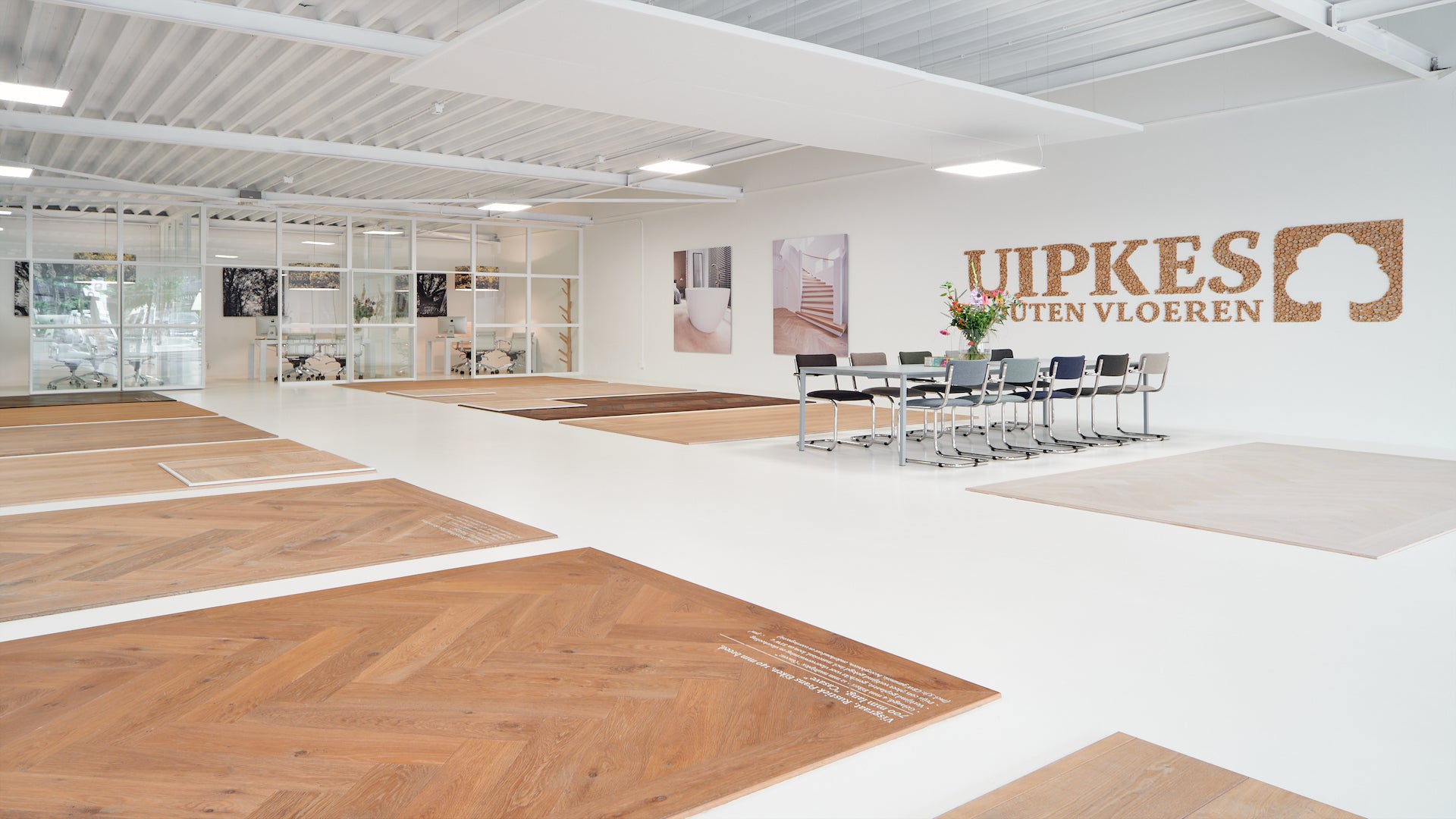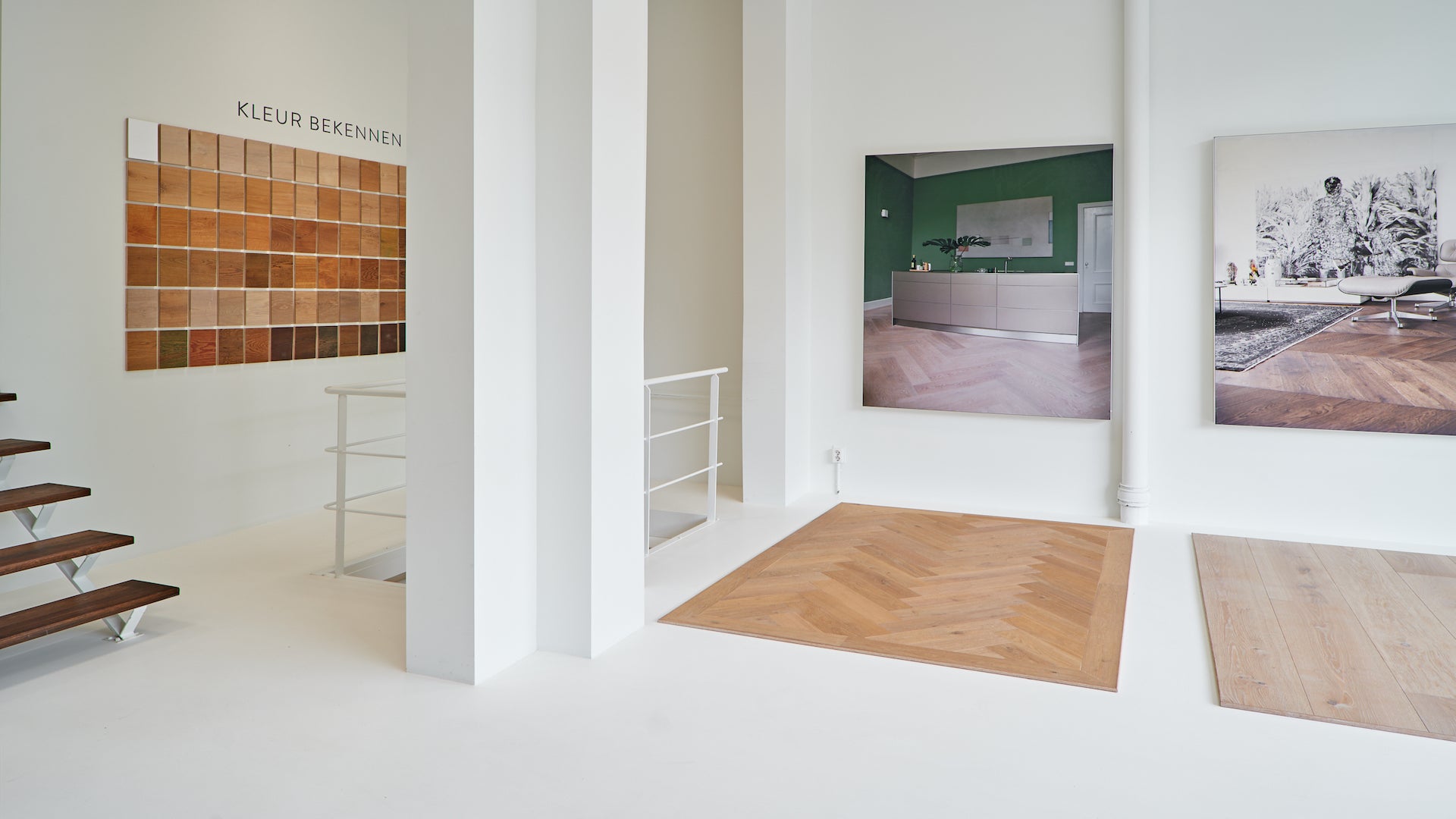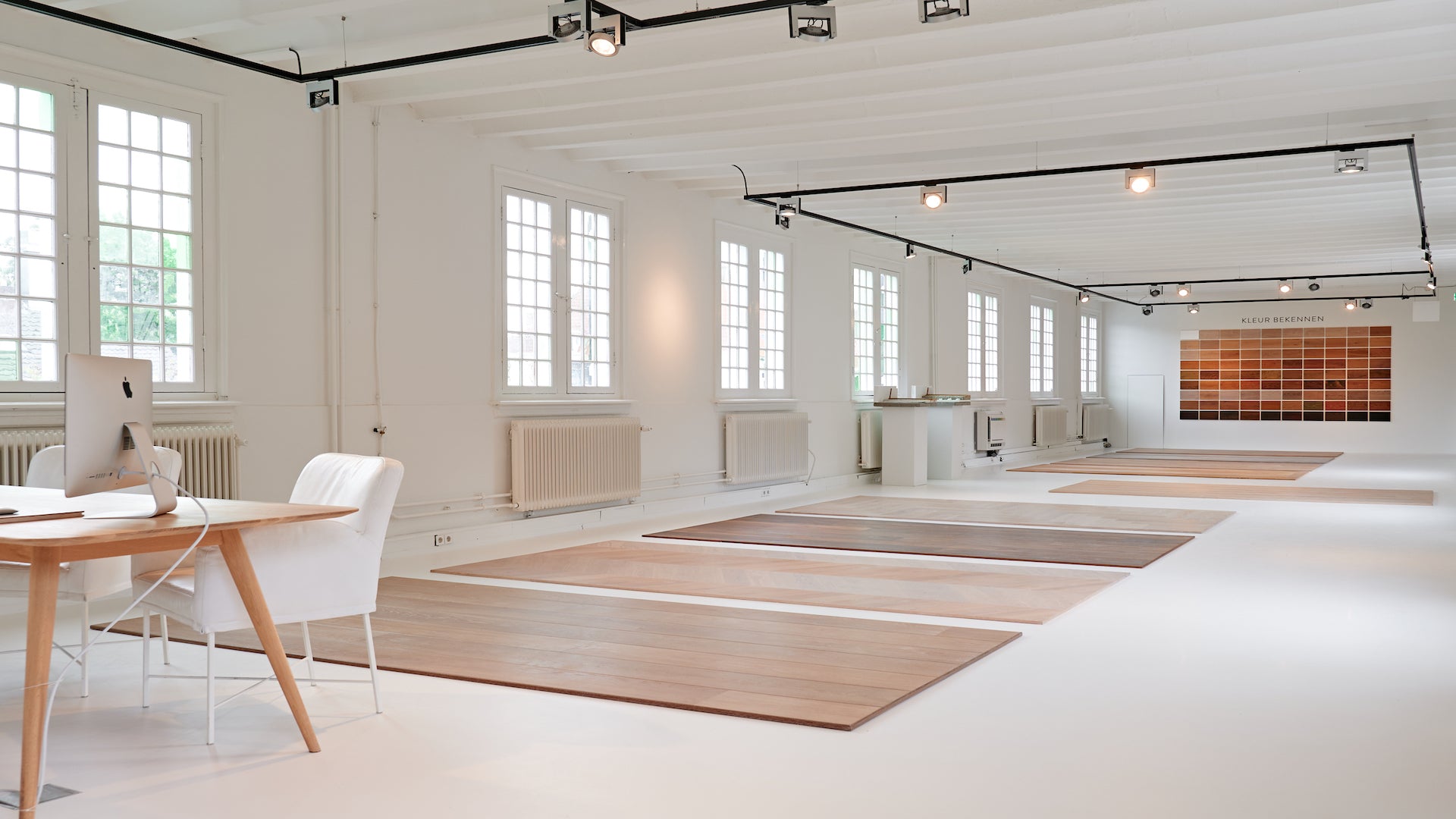HOUTEN VLOEREN RECHTSTREEKS VERLIJMD

Bezoek de showroom
The method to combine underfloor heating with an engineered floor is to glue it to the subfloor without applying an extra layer.
BOND THE WOODEN FLOOR DIRECTLY TO THE SUBFLOOR
In combination with a 4 mm oak top layer on 12 mm birch plywood, this method only gives a resistance (Rc value) of 0.09. This product is available in a plank, herringbone or chevron floor in various widths, many color finishes and in this combination it will provide decades of pleasure. In addition, this installation method is also ideally suited for spaces with large spans. With this installation method, the layered parquet (12/3, 16/4 or 20/6 *) is glued directly to the pre-finished floor.
Magazine vol inspiratie

FEATURES INSTALLATION METHOD
- Sounds just like the basic floor (concrete, wood), which reduces so-called loosening.
- Not demountable.
- The floor is based on a very stable construction.
- The application is suitable for sand cement, anhydrite, tiles, with or without underfloor heating .
- Not applicable on a work floor made of wood, cork or linoleum.
- The expansion and contraction of the planks is very limited.
- The installation method is more suitable for the experienced 'do it yourselfer'.
- Thickness of the total floor (incl. primer) is 12mm for "Floortje", 16mm for "Vincent" or 20mm for "Robin"
9/3: layered plank of 10 mm in total thickness with 3 mm hardwood top layer, "Floortje"
16/4: layered plank of a total of 15 mm thick with 4 mm hardwood top layer, "Vincent"
20/6: layered plank of a total of 20 mm thick with 6 mm hardwood top layer, "Robin"
'A directly glued floor is less effective due to the direct adhesion to the subfloor.'
Showrooms
Meer informatie?
Frequently Asked Questions
Should I use a moisture barrier under engineered wood floors?
In some cases it is recommended to use a moisture barrier, especially when installing engineered wood flooring on concrete subfloors. A moisture barrier protects the wood against moisture that can rise from the subfloor. Consult the manufacturer's instructions to determine if a moisture barrier is necessary for your specific situation.
Can I install engineered wood flooring directly on a wooden subfloor?
Yes, engineered wood flooring can be placed directly on a wooden subfloor. Make sure that the wooden subfloor is solid, dry and free of loose parts. Follow the manufacturer's instructions and use a vapor barrier film if necessary to prevent moisture problems.
Can I install engineered wood flooring on an existing tiled floor?
Yes, it is possible to install engineered wooden floors on an existing tiled floor. Make sure the tiled floor is flat, clean and free of loose or damaged tiles. It may be necessary to level the joints of the tiles before installing the engineered wood floor. Consult the manufacturer's instructions for specific guidelines.
Do I have to glue the engineered wooden planks to the subfloor?
Glueing engineered wood flooring to the subfloor is a possible installation method, but it is not always required. Many engineered wooden planks have a click system that allows them to be installed floating. Read the manufacturer's instructions to determine the recommended installation method.
Can I install engineered wood flooring on underfloor heating ?
Yes, engineered wood flooring can generally be installed on underfloor heating systems. Follow the manufacturer's instructions, as not all types of engineered wooden floors are suitable for underfloor heating . Make sure the underfloor heating is installed correctly and follow the recommendations regarding maximum surface temperature.
Should I leave the expansion joints around the floor?
No, it is not always necessary to leave expansion joints around the floor. This largely depends on the type of parquet floor. Engineered wood flooring with a birch plywood underlay expands minimally, so it can be placed tightly against walls. Seek advice from the flooring expert to determine what is necessary.


